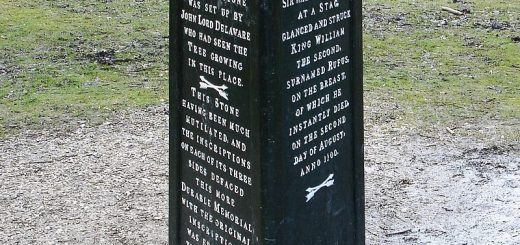The Dragon in Folklore & Legend
The dragon is a legendary creature, which is prevalent to the mythic culture of many countries. Britain, with its diverse history, has a tradition of dragons stemming from Saxon, Celtic and Norse influences, as well as those from further afield. What follows is a brief overview of the dragon in legend and folklore, as well as some theories as to what the dragon may signify.
The Worm
 The most common dragon to appear in British folklore, and perhaps the earliest root of the dragon legend is the worm (wurm), which stems from Norse influences and the Anglo Saxon word Wyrm or vurm. In appearance the worm is wingless and scaly with no arms or legs, very similar to a gigantic snake but with the added dread of poisonous breath, and the ability to rejoin after being cut into pieces. These great worms were often the metal to test the courage of aspiring heroes. The Lambton worm () was one such creature as was the dragon of Loschy Hill. As well as being the making of young heroes, dragons often have other similarities within folklore. They are often associated with the guarding of treasure (or captive maidens), and with sacred wells, hillocks, springs and deep caves. This may have some relation to ancient religious beliefs and mythic patterns, and esoterically dragons have been linked with the belief in earth energies and chthonic subterranean forces.
The most common dragon to appear in British folklore, and perhaps the earliest root of the dragon legend is the worm (wurm), which stems from Norse influences and the Anglo Saxon word Wyrm or vurm. In appearance the worm is wingless and scaly with no arms or legs, very similar to a gigantic snake but with the added dread of poisonous breath, and the ability to rejoin after being cut into pieces. These great worms were often the metal to test the courage of aspiring heroes. The Lambton worm () was one such creature as was the dragon of Loschy Hill. As well as being the making of young heroes, dragons often have other similarities within folklore. They are often associated with the guarding of treasure (or captive maidens), and with sacred wells, hillocks, springs and deep caves. This may have some relation to ancient religious beliefs and mythic patterns, and esoterically dragons have been linked with the belief in earth energies and chthonic subterranean forces.
The Dragon and Early Christianity
One pattern that can easily be gleaned from dragon folklore is the early struggle between Paganism – symbolised as a dragon – and Christianity. A carving of a conquered dragon can be found on the font of the church at Avebury, that great temple to ancient religion. Another reflection of this battle can be seen in the early saints penchant for dragon slaying. Saint Sampson of Cornwall is said to have led a dragon from its lair in a moorland cave, to its death over the rugged sea cliff on the peninsula; St Serf is said to have destroyed a dragon living in Dragon Hole in Kinnoul, Perthshire in the 6th century. Other saints dealt with dragons less severely, St Petroc whispered a prayer in to the ear of a Cornish dragon, after which it swam out to sea to new lands; and St Carantoc led another dragon away from its swamp abode to the wild places where few ventured. Even local priests had the power to banish dragons, at Winlatter rocks in Derbyshire, a priest banished a dragon with such force that his footprints were left entrenched in the solid rock. This dragon retired to the Blue John mines where his sulphurous breath warms some of the local springs. The association of dragons with the early Saints and Christianity may be due to the fact that the dragon was often analogous with the Devil in some folk tales, and the relation between dragons and the serpent in the bible would not have been overlooked.
Other Dragons
In the south of England the name for a pool dwelling worm was a Knucker, they lived in deep pools known as Knucker Holes. One such lair was the Knucker Hole near Lyminster church in Sussex, a deep pool once thought to be bottomless. The dragon that dwelled here was slain by a conquering hero, who claimed the hand of the King of Sussex’s daughter for his troubles.
The dragon that is most often depicted in art and visualized by most people is the heraldic dragon, which is fire breathing, has legs and arms equipped with sharp talons, and wings like those of a bat. This is a later rendering of the dragon, and may date from influences brought over by the Romans. It may have also developed from the Wyvern, which had the legs of and wings of an eagle and the body of a serpent.
 Dragons as Evil Omens
Dragons as Evil Omens
Strange lights in the sky were also attributed to or recognised as dragons, and were seen as ill omens portending dire future events. In the dark winter months of 793, the monks at Lindisfarne saw terrible dragons of many colours flying over the island.
This was taken as a bad omen, and sure enough not long afterwards the Vikings raided the island and sacked the monastery, mercilessly slaying the monks and looting their treasures. In 1222 dragons were seen over London, which was followed by severe thunderstorms, blamed by observers on the presence of the dragons. Obviously freak weather conditions – and perhaps related phenomena such as ball lightning – were often seen as mythical creatures in the past, without any other form of explanation.
The actual roots of the dragon lore are more difficult to discover, the dragon does not seem to be based on a physical creature, and suggestions that they are deep-rooted memories of the dinosaurs cannot really be upheld. Whatever their origin the dragon is now an image entrenched in our imaginations, invoking images of cunning fire breathing monsters, guarding vast hoards of gold and jewels within deep caverns.




Recent Comments